Shelter from the Storm
Preparedness Education for Vulnerable Populations
People experiencing homelessness or potentially facing housing insecurity are among those whom first responders are especially concerned about when severe weather occurs.
For Kids!
Are You Prepared for Severe Storms?
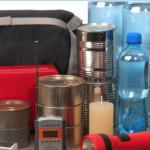 Thunderstorms, hurricanes, tornadoes, and nor’easters often lead to power outages and flooding as well as damage to trees and physical property. Communications, food, water and gasoline could be in limited supply. What can you do to be better prepared?
Thunderstorms, hurricanes, tornadoes, and nor’easters often lead to power outages and flooding as well as damage to trees and physical property. Communications, food, water and gasoline could be in limited supply. What can you do to be better prepared?
Build a Low Cost Emergency Supply Kit
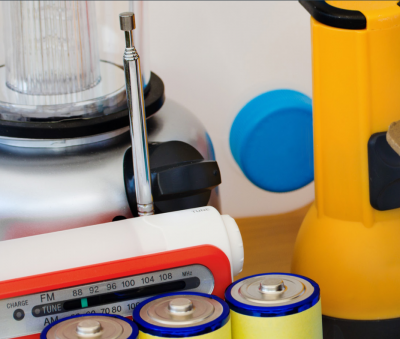
You can build your own emergency kit inexpensively. Though pre-made emergency supply kits are available for purchase, they are often costly. They may include items you don’t need and lack those you do. You know your household’s needs best and can be sure to include the items you and your family will need.
Financial Preparation for Severe Storms

There are several actions you can take to get your family and home ready for storms and other emergencies. What can you do to prepare financially.
Power Outages Preparedness
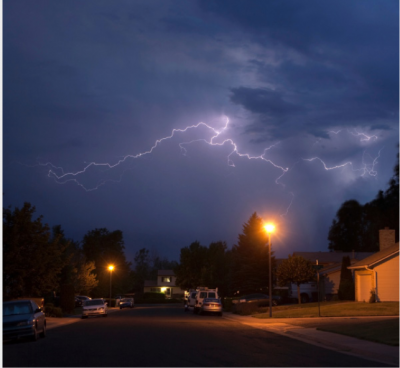
Power outages can occur at any time. Some are short-term and may last for a few hours. Others can last for several days to a week or more. Can you recall how you and your family were affected the last time this happened? Start preparing now so you can be safe and more comfortable when the power goes out.
Children and Severe Weather

Severe weather can strike at any time. Prepare in advance so you and your children are safe, confident, and ready. Younger and older children rely on adults to provide information and guidance. Have you discussed with them what to do if severe weather strikes?
Fire Safety – Prevent, Prepare and Take Action
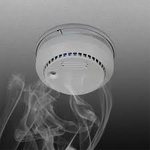 Fire safety may not be a thought on every horse owner’s mind, but it should be in order to prevent tragedy from occurring. It seems like every horse owner knows stories of horrific barn fires and you certainly don’t want to be the next one! The burning rate of loose straw is 3 times that of gasoline. The burning time of a 12’ by 12’ stall is approximately 90 seconds. You have 30 seconds to get a horse from a stall after the stall ignites, so start planning what to do NOW! There are three major aspects to fire safety: prevention, preparation for fire, and action to take when a fire occurs.
Fire safety may not be a thought on every horse owner’s mind, but it should be in order to prevent tragedy from occurring. It seems like every horse owner knows stories of horrific barn fires and you certainly don’t want to be the next one! The burning rate of loose straw is 3 times that of gasoline. The burning time of a 12’ by 12’ stall is approximately 90 seconds. You have 30 seconds to get a horse from a stall after the stall ignites, so start planning what to do NOW! There are three major aspects to fire safety: prevention, preparation for fire, and action to take when a fire occurs.
Food Safety During a Power Outage
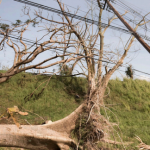 First, it is important to keep the doors closed on your refrigerators/freezers as much as possible, keeping the cold air inside.
First, it is important to keep the doors closed on your refrigerators/freezers as much as possible, keeping the cold air inside.
How to Prepare for Equine Disasters
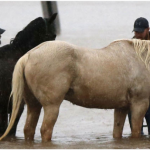 We have all watched the evening news and seen horses stranded in floods or have heard about the latest barn fire in our communities. First, some shocking statistics. Every year, floods in the United States cause $2 billion in damage and animals risk death from hypothermia or drowning. Annually more than 300,000 people are driven from their homes by floods. An estimated 20,000 agricultural fires per year result in $102 million in direct property loss.
We have all watched the evening news and seen horses stranded in floods or have heard about the latest barn fire in our communities. First, some shocking statistics. Every year, floods in the United States cause $2 billion in damage and animals risk death from hypothermia or drowning. Annually more than 300,000 people are driven from their homes by floods. An estimated 20,000 agricultural fires per year result in $102 million in direct property loss.
My Important Family and Financial Records
 By gathering important information now, you can make it much easier for family members and yourself to recover from an emergency or disaster situation. For example, in the event of a severe storm, it might be necessary to quickly evacuate your home. There may not be the time enough to collect all your important information likely to be needed to help you recover as quickly as possible. Also, trying to locate records following a natural disaster or an emergency can be more difficult to accomplish and add more stress to a challenging situation.
By gathering important information now, you can make it much easier for family members and yourself to recover from an emergency or disaster situation. For example, in the event of a severe storm, it might be necessary to quickly evacuate your home. There may not be the time enough to collect all your important information likely to be needed to help you recover as quickly as possible. Also, trying to locate records following a natural disaster or an emergency can be more difficult to accomplish and add more stress to a challenging situation.
Making Food Safety Decisions After a Power Outage
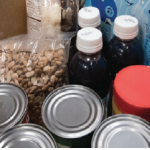 After a power outage it's hard to know which foods to keep and which to discard. Our food safety experts can help you decide and keep your family safe and healthy.
After a power outage it's hard to know which foods to keep and which to discard. Our food safety experts can help you decide and keep your family safe and healthy.
Reducing Storm Damage to Your Barn
 Buildings need to provide a safe environment for workers and animals. Historically, agricultural buildings were considered of “low importance,” so structural load reductions of roughly 20 percent may have been applied in the design. If there were no engineered building prints or structural inspections, the owner assumed responsibility for building design.
Buildings need to provide a safe environment for workers and animals. Historically, agricultural buildings were considered of “low importance,” so structural load reductions of roughly 20 percent may have been applied in the design. If there were no engineered building prints or structural inspections, the owner assumed responsibility for building design.
Preparing Your Greenhouse for a Hurricane
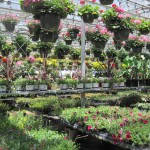
A hurricane gets its energy from the condensation of the water vapor of the tropical atmosphere in West Africa or the Southern Gulf of Mexico into droplets. Once rotation is initiated due to instability in the atmosphere, the latent heat is released and creates a huge wind force and precipitation potential.
Pre-Storm To Do List
 Power outages from wind and rain storms, ice and snow storms will make life interesting. It can take days or even weeks to get the power restored after an outage. Plan and prepare before a storm hits.
Power outages from wind and rain storms, ice and snow storms will make life interesting. It can take days or even weeks to get the power restored after an outage. Plan and prepare before a storm hits.
Safely Trailering and Loading Your Horse
 In order to have a successful trip with your horse, there are some safety considerations involved. It is important to know how to safely load and trailer your horse. Unsafe trailering and loading can lead to accidents and health concerns.
In order to have a successful trip with your horse, there are some safety considerations involved. It is important to know how to safely load and trailer your horse. Unsafe trailering and loading can lead to accidents and health concerns.
Staying Home? Prepare in Advance for Storms
 “Sheltering in place” means staying indoors at a safe location during an emergency/storm. It may be home, work, school, or somewhere else. For your own safety, evacuate (leave) if directed to by a public official. Try to be in a safe location, if possible, before a storm starts.
“Sheltering in place” means staying indoors at a safe location during an emergency/storm. It may be home, work, school, or somewhere else. For your own safety, evacuate (leave) if directed to by a public official. Try to be in a safe location, if possible, before a storm starts.
When the Power Goes Back On – Cleaning Your Fridge and Freezer
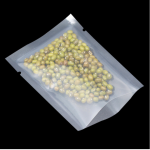 If your house (and food supply) was damaged by flooding, even non-perishable foods can present a food safety problem. Do not eat any food that may have come into contact with flood water, particularly those that are packed in plastic, paper, cardboard, cloth, or similar containers. If contaminated by flood waters, containers with screw-caps, snap lids, crimped caps, twist caps, flip tops, or those that were at home should be discarded. Do not eat produce from a garden that has been flooded. Again, keep a list of foods that must be destroyed due to flooding.
If your house (and food supply) was damaged by flooding, even non-perishable foods can present a food safety problem. Do not eat any food that may have come into contact with flood water, particularly those that are packed in plastic, paper, cardboard, cloth, or similar containers. If contaminated by flood waters, containers with screw-caps, snap lids, crimped caps, twist caps, flip tops, or those that were at home should be discarded. Do not eat produce from a garden that has been flooded. Again, keep a list of foods that must be destroyed due to flooding.
Wind Loads on Greenhouses
 In most sections of the U.S., the wind load is the greatest force that a greenhouse will be subject to. This can occur from hurricanes, tornados, or the sudden squall from a passing weather front.
In most sections of the U.S., the wind load is the greatest force that a greenhouse will be subject to. This can occur from hurricanes, tornados, or the sudden squall from a passing weather front.
Winter Storm Preparedness
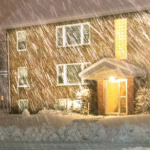 During the winter, see what conditions are forecast in your area for the upcoming week. If a winter storm is predicted, you want to be SAFE and WARM. Take actions to prepare in advance. Winter weather may include extreme cold, snow, blizzards, ice, freezing rain, high winds, flooding or thunder and lightning. Pay attention to the wind chill on weather forecasts, it makes you feel colder than the actual temperature.
During the winter, see what conditions are forecast in your area for the upcoming week. If a winter storm is predicted, you want to be SAFE and WARM. Take actions to prepare in advance. Winter weather may include extreme cold, snow, blizzards, ice, freezing rain, high winds, flooding or thunder and lightning. Pay attention to the wind chill on weather forecasts, it makes you feel colder than the actual temperature.
Your Home Inventory
 A home inventory is a tool you can use to document your ownership of personal property. Homeowners and renters can benefit from having an up to date household inventory in several ways.
A home inventory is a tool you can use to document your ownership of personal property. Homeowners and renters can benefit from having an up to date household inventory in several ways.